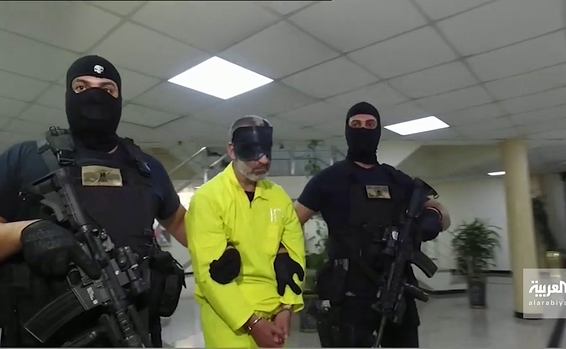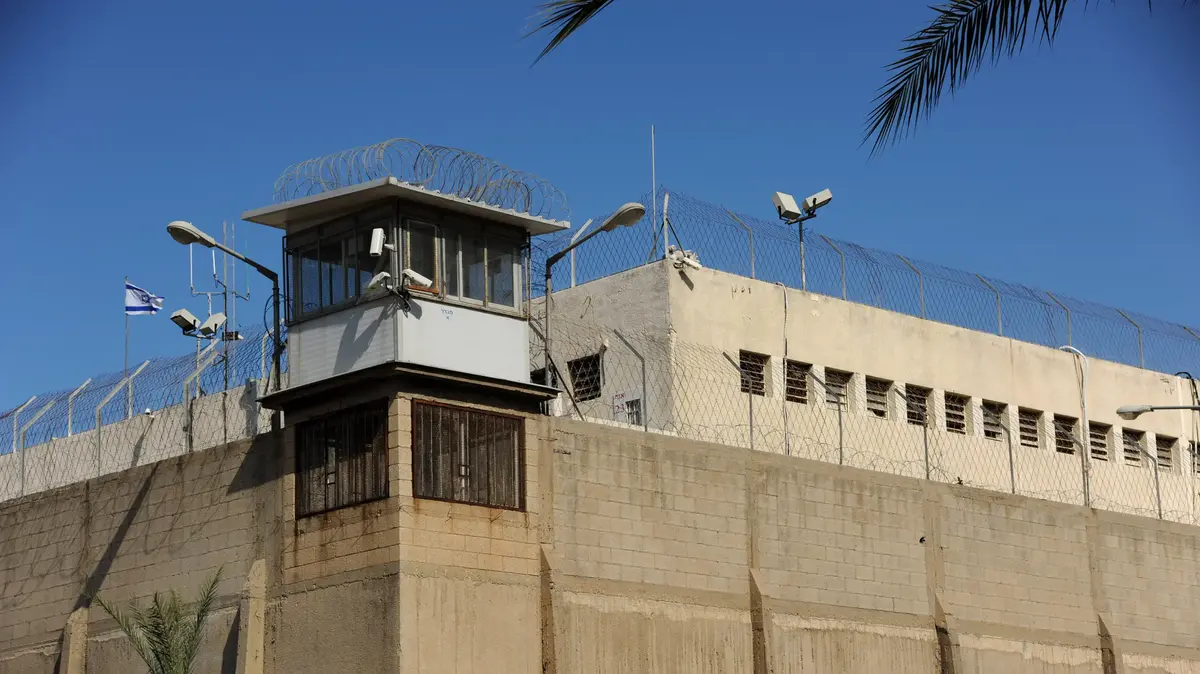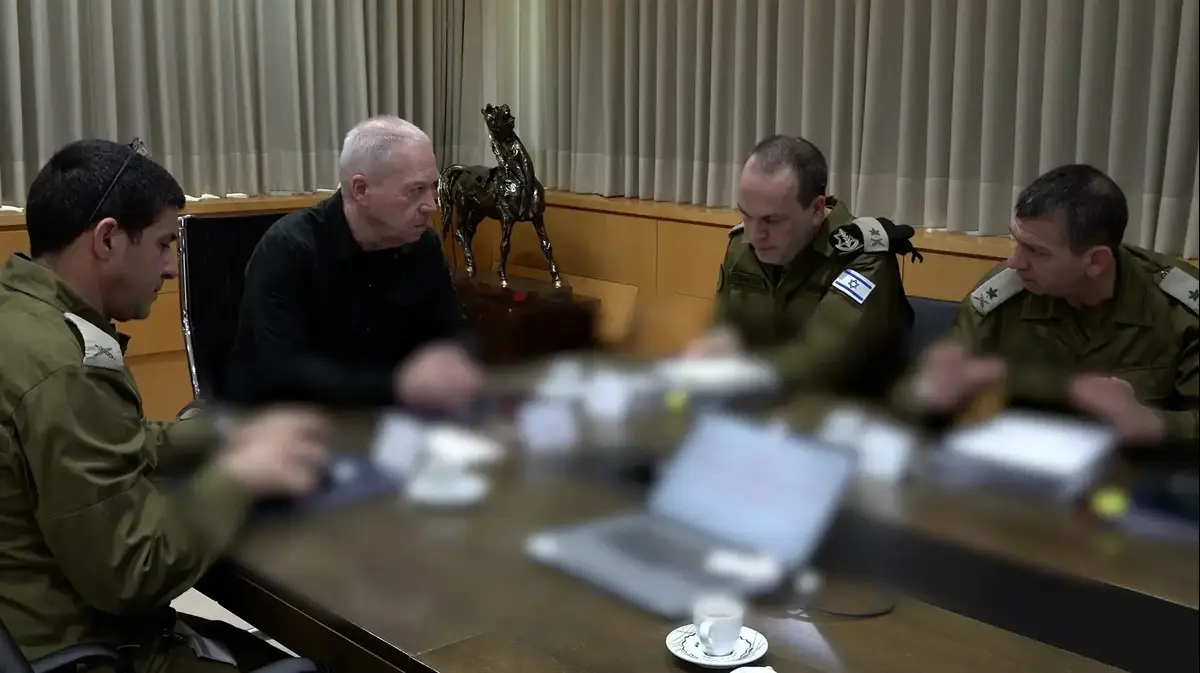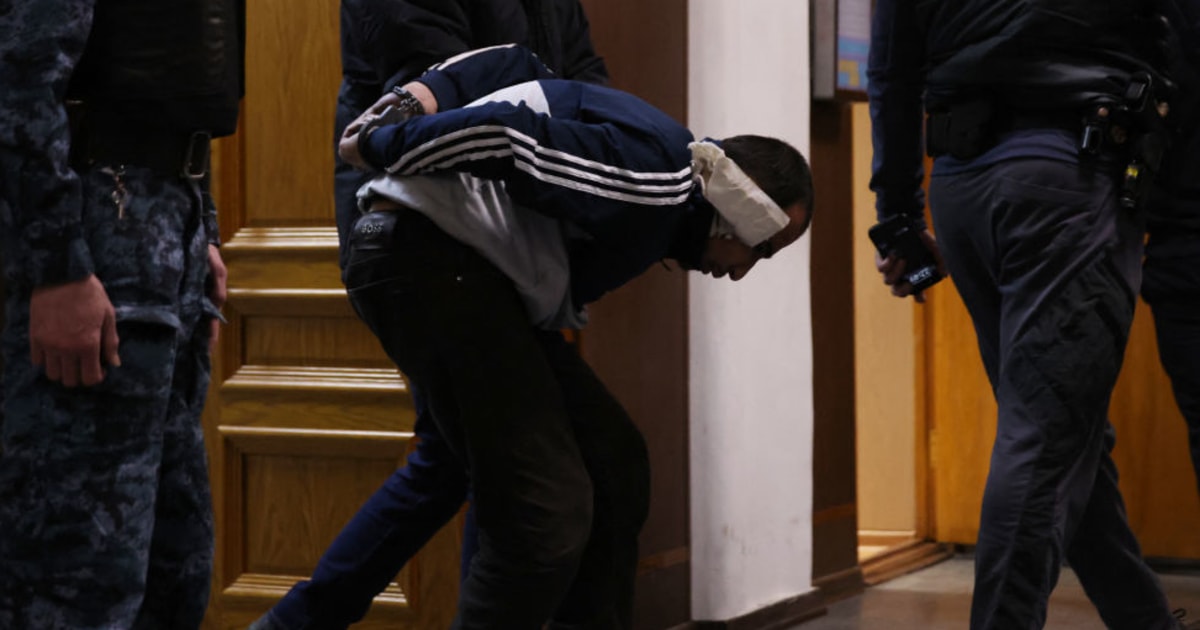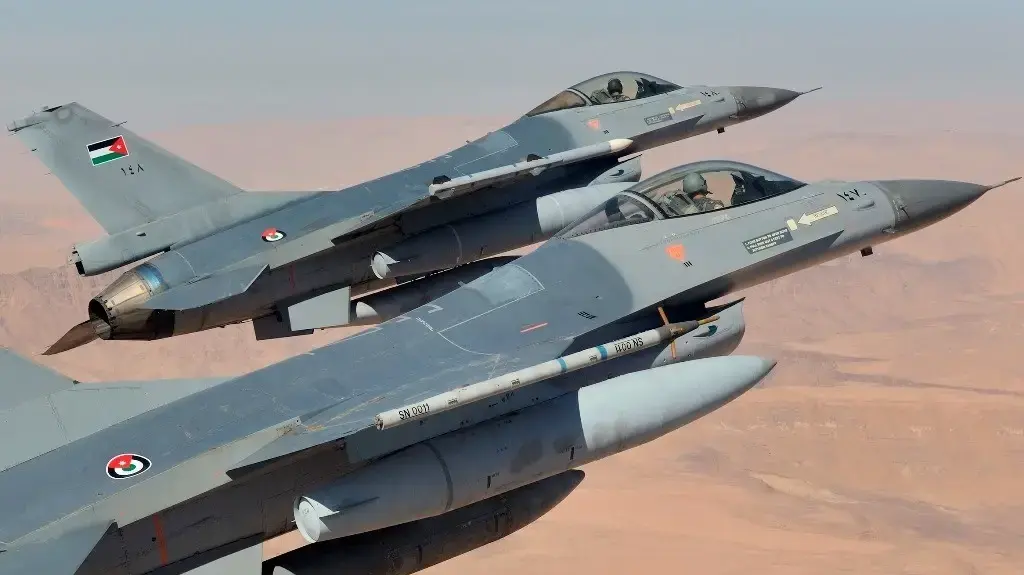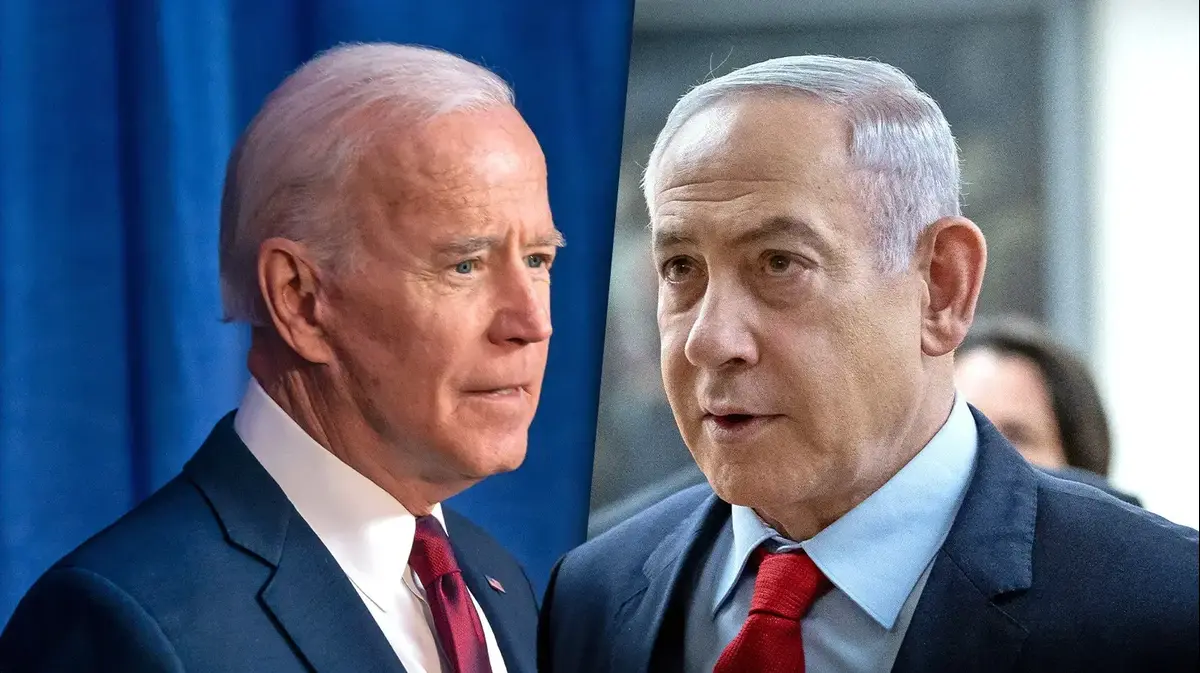After reporting that the leader of the organization has been captured, Iraqi media has updated that it is only a former candidate • US report sheds light on terrorist organization structure
Al-Kardash is led by security forces.
Photo:
Al-Arabia
Iraqi media reported Wednesday the arrest of alleged new ISIS leader Nasr al-Kardash. However, the arrest photos circulated in the Arab media indicated that the terrorist organization was apparently another official, and reports of the arrest were updated accordingly. Among other things, it was stated that it was only a candidate to network Al-Baghdadi.
Against this backdrop, an American report released this week by the Global Policy Center by Dr. Hosham Al-Hashimi sheds light on the organization's new structure since the abolition of Abu Bakr al-Baghdadi. Al-Hashimi is an Iraqi scholar specializing in al-Qaeda and ISIS, and advises various Iraqi organizations.
#BREAKING: Iraq Intelligence Agency has just announced the arrest of Abu Ibrahim al-Hashmi al-Qureshi, the successor to #ISIS leader Abu Bakr al-Baghdadi. Yet another setback to the so-called Islamic State. pic.twitter.com/hpz5XIxpT0
- Aditya Raj Kaul (@AdityaRajKaul) May 20, 2020
The new ISIS leader (right), senior captured (left)
Al-Hashimi was interviewed tonight about Al-Kardash's case on the Saudi Arabia's pro-Arab network after his arrest, stating that he was the closest person to Al-Baghdadi. He also referred to documents bearing his signature and testifying to his apparent importance in the organization. In those documents, Al-Kardash directly addresses Al-Baghdadi through the Executive Committee. During his interrogation, according to the report in Al Arabia, al-Kardash revealed controversies between Arab and foreign activists in ISIS, in addition to theft. The wards, for example, touched on the execution of the organization's prisoners.
According to the same report, Iraqi and American intelligence sources confirmed that ISIS's new leader was identified by the group as Abu Ibrahim al-Hashimi al-Quraishi, and that it was in fact Amir Muhammad Said al-Salabi al-Mawla, a longtime leader from northern Iraq. In various past reports, al-Salibi was also known as al-Kardash.
Photo Archive
According to the same report, after losing its outposts in Iraq last year, the World Terrorist Organization has undergone a structural change. The leadership map revealed in the report was compiled from data collected by intelligence agencies in Iraq. Incidentally, Al-Kardash who was caught last night was not mentioned as having a role in the organization's map.
In a July 2016 video, the Islamic State provided information about the structure of the caliphate, which it claims has 35 "villas" (districts), 19 of which are in Syria and Iraq. The organization also held 14 government offices and five departments responsible for remote districts, PR and relations with tribes, research and studies, immigration, and matters related to members of the organization who were captured or died.
During the war against the World Terrorist Organization between 2017 and 2019, some 43 of ISIS's founders were killed, including leader Abu Bakr al-Baghdadi. Apart from these key leaders, 79 middle class officers were killed in addition to hundreds of field and logistics officers.
According to the published leadership chart, ISIS is headed by the caliph who bears the name Amir Muhammad Said al-Salabi al-Mawla, who is known as Abu Ibrahim al-Hashimi al-Qurishi. Underneath it is the head of the executive committee, Sami Jasim Muhammad al-Jubari. On the same committee, members of Khatab Ghazel al-Somaidai, Motz Numan Abd Naif Al-Jubari and Ziad Johar Abdullah. Iraqi district manager is Jaber Salman Ali al-Isawi. Under the command of the Iraqi District Commander, there are at least seven commanders responsible for sub-districts.
The report also says that only a minority of ISIS forces came into contact in some areas in northern and central Iraq. Under the "new caliphate", there are two levels of commissions: the Shura Five Committee, which serves as an advisory body, headed by Haji Juma Awad El -Badri, al-Baghdadi's brother, while the five-member executive committee headed by Sammy Jessim al-Jubari, each member of the last committee, is responsible for another area: security, religious affairs, communications, finance, etc. The main change was that the committee The principal made a decision to extend the powers of the various districts to financial independence, and reduce suicide bombings.
The report notes that ISIS manages 14 provinces, five government offices and one remote immigration and management department. In December 2014, at the height of its power in Iraq and Syria, the organization numbered 36,000 fighters divided into three "armies": the Caliphate Army, Al-Osra Army And the al-Dabik army. Among the last of the organization in the Euphrates Valley, ISIS has one "army" called the al-Khalid army, which included 4,000 active fighters. Today, ISIS has an estimated number of between 3,500 and 4,000 fighters, in addition to 8,000 fighters Active in 11 provinces in Iraq.

